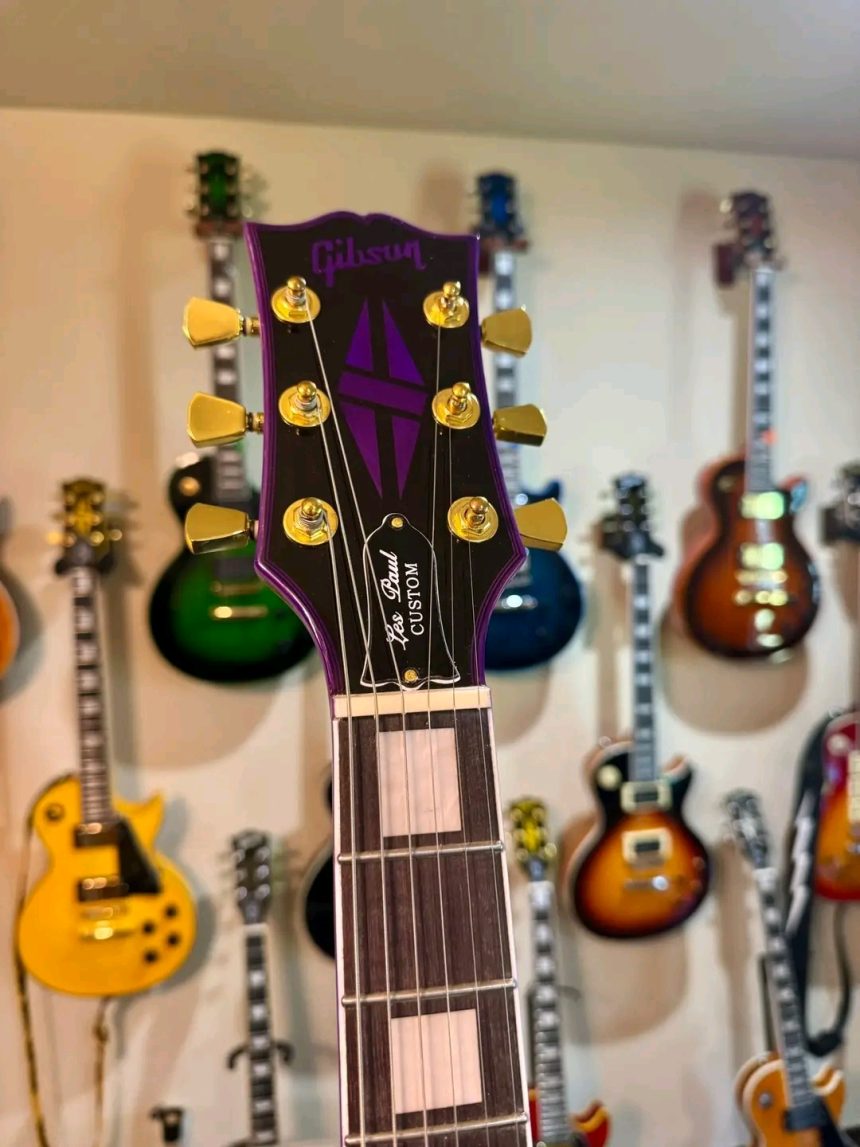poetic portrayal of the world being shocked to hear the most astonishing, sweetest sound of a new 2025 modern guitar. Here’s a rich, immersive narrative. I’ve woven in imagery, emotion, atmosphere—so you can practically hear it in your imagination:
—
The day began like any other: Earth turning in steady rhythm, the air vibrating with routine. But then—from the workshop in an unassuming corner of a small coastal town—the new 2025 Modernist V-Frame electric guitar let loose a single chord. And the world stopped.
At the instant that string thrummed, sunlight on glass skyscrapers shivered. Birds froze in mid-flight; bees halted mid-hover. The chord was a liquid silver bell, trembling with longing and joy. It unfolded like petals of sound, each harmonic bloom revealing richer warmth: a crystalline whisper, then a velvet purr, then a symphonic roar.
Engineers, hearing it through speakers in their labs, dropped their soldering irons. Commuters in trains paused with open mouths. Somewhere a bakery’s dough rose more gently, and in the cockpit of a jetliner, a pilot glanced at her instruments as though uncertain if reality itself had glitched.
This single guitar had been shaped by a master luthier who combined space‑age carbon fiber necks with ancient spruce and mahogany, layering micro-tuned harmonics with AI‑refined resonance chambers. When the first note rang out, the very molecules of air rearranged themselves to carry each overtone with pristine clarity. Listeners reported hearing not just one note, but an entire spectrum—a chord that felt alive, as though the earth had learned to breathe music.
A child in Lagos, Lagos, Nigeria—sprawled out under a mango tree—heard it drifting in radio waves and gasped. For a moment, she believed it came from the heavens. In Paris cafés, journalists ceased typing mid-sentence. In Japan, a Zen monk listening through headphones let tears roll silent down her cheek. The chord seemed simultaneously futuristic and ancient, like sunlight striking a fossil, or a memory rediscovered from before language existed.
Scientists scrambled to capture the audio waveform. On their screens, flattened graphs sprang into colorful fractals—audible art. Each successive overtone danced at slightly shifted tuning, weaving magic. Within the waveform’s peaks lay hidden micro-intervals so pure they made conventional tuning feel muddy in comparison.
At the global concert hall in London, speakers played the recording: the audience drew a collective breath that lasted seventeen seconds. When the final harmonic faded, there was no applause—just a hush so thick it felt sacred. Then someone whispered: “That was… hope.”
Engineers reverse‑engineered the resonance chamber. They discovered a tiny nano‑crystal array embedded in the headstock, synthesized to channel cosmic background hum into musical bloom. It was like scientific poetry. Musicians around the world waited for the guitar’s prototype to release. The moment it did, queues formed at boutiques from California to Bengaluru. Every music shop offered “a chance to touch infinity.”
When a guitarist plucked its first open G chord on stage, the audience heard a sigh that carried all stories of human longing. Tears streamed down faces; strangers embraced. Some swore they felt a millimeter-scale shift in their spine alignment—like musical chiropractic—an emotional realignment.
Critics spoke in reverent tones: “This instrument doesn’t just produce sound—it reveals it,” one wrote. Another described it as “the breakup between physics and spirituality, finally resolved.” Bloggers created slow-motion videos of guitars vibrating in light beams; viewers watched as the body gently glowed, as if lit from within by the resonance itself.
Fiction writers referenced it in new short stories: in one, the chord shattered a villain’s arrogance and turned his tyrant’s heart to kindness. In another, astronauts on Mars played it over comms and it awakened Martian sand dunes, which rippled like applause.
Universities studied its psychoacoustic effects: they found it stimulated oxytocin, endorphins, a mild dopamine rush, and something deeper—something unmeasurable. Musicians said they felt their muscles tune to its hum; even amateurs produced chords with richer overtones.
Record producers competed fiercely for rights to the first recordings. The “C‑Spectrum Drop”—the descending cascade of hidden undertones—became the most beloved sample among sound designers. Film composers layered it under emotional scenes: lovers reunited, winters thawing, revolutions easing into peace.
Amateur guitarists bought clones. Workshops sprang up teaching how to coax “the silver bloom” from the strings. Teachers told students: “Play not on the guitar, but with it—as you would co‑compose a poem.”
But the sweetest moment came when—and this is purely fictional—an alien listening station on Europa’s ice‑capped ocean, tuned into Earth, picked up that chord. The extraterrestrials, sophisticated sound‐engineers of a thousand ice‑shanties, transmitted back a response: a three‑tone harmonic greeting. Earth‑based guitarists heard it raw, then tried matching it. They made new guitars in response—half‑earth wood, half‑Europa ice‑crystal tuning forks.
Music festivals rebranded: the “2025 Modern Guitar” became the headline act—even when it played alone. Entire nights curated sets around its tone: ambient artists sampled its chime; jazz players improvised scales bending into its micro‑intervals. A veteran rock guitarist said it reminded him of the first time he plugged into an amp at age sixteen: “That pure thrill, times a thousand.”
By the end of the year, the chord had circulated through millions of recordings. Yet no reproduction could quite match the original’s purity. Avid collectors whispered that only the first run—the handcrafted prototypes—held the true crystalline bloom. Others insisted that playing it live, acoustic, into open air is where its magic lived.
Philosophers wrote essays: “What is sweetness? It is resonance aligning with desire. This guitar carved a subtractive path through disharmony and planted a seed in each listener—an impulse to feel more, be more.”
Artists painted abstract canvases titled After the 2025 Chord: swirls of silver twilight, bursts of coral, fractal petals of sound rippling outward. Writers quoted the chord in novels: “In that instant, Earth awoke to listen.”
Late at night, a soloist plays it under the stars. The ocean answers. The wind joins, and the cello of distant galaxies vibrates along. You realize: that chord didn’t just shock the world—it reminded it to breathe music again.
In the end, the most astonishing, sweetest sound of the new 2025 modern guitar wasn’t just an instrument—it was a moment carved into time, a sonic cathedral where every listener became both musician and audience, bonded by that single, shimmering chord.
And in that shared resonance, humanity encountered its own reflection: fragile, hopeful, and endlessly experience—a poetic journey capturing the moment the world paused to hear that guitar’s enchanting, world‑shattering tone. Let me know if you’d like it shorter, more lyrical, or shaped in another genre!









